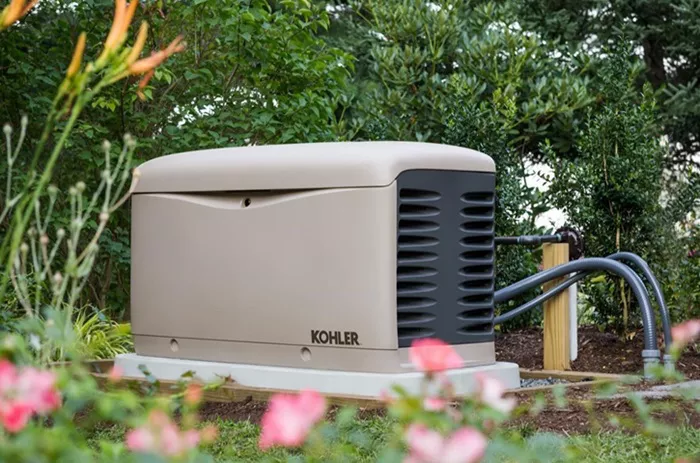A reliable generator is essential to keep your home refrigerator running during power outages. Without electricity, your fridge can stop working, leading to food spoilage and financial loss. Choosing the right generator requires understanding power requirements, fuel types, and safety features.
In this guide, we’ll discuss the best generators for home refrigerators, how to calculate power needs, and key features to look for. Whether you need a backup for short outages or long-term emergencies, this article will help you make an informed decision.
Understanding Refrigerator Power Requirements
Before buying a generator, you must know how much power your refrigerator needs. Refrigerators don’t run at a constant wattage—they cycle on and off. Two key power measurements are:
Running Watts : The continuous power needed to keep the fridge operating.
Starting Watts (Surge Watts) : The extra power required when the compressor starts (usually 2-3 times higher than running watts).
How to Calculate Your Refrigerator’s Power Needs
Check the fridge’s label or manual for wattage.
If only amps and volts are listed, use this formula: Watts=Volts×Amps
Most standard refrigerators need:
- Running Watts: 600–800W
- Starting Watts: 1,200–2,400W
A generator with at least 2,000–3,000 watts is usually sufficient for a fridge, with extra capacity for other appliances.
Types of Generators for Home Refrigerators
Portable Generators
- Best for short-term outages (a few hours to a couple of days).
- Run on gasoline, propane, or dual fuel.
- Require manual setup and fueling.
Pros:
- Affordable.
- Easy to store and move.
Cons:
- Noisy.
- Need proper ventilation to prevent carbon monoxide buildup.
Inverter Generators
- Provide clean, stable power (safe for sensitive electronics).
- Fuel-efficient and quieter than traditional portable generators.
Pros:
- Lightweight and portable.
- Lower emissions.
Cons:
- Higher cost.
- Limited power output (usually under 3,500W).
Standby Generators
- Permanently installed and automatically turn on during outages.
- Powered by natural gas or propane.
Pros:
- Hands-free operation.
- Can power the whole house.
Cons:
- Expensive.
- Requires professional installation.
Key Features to Look for in a Generator
Wattage Capacity
Choose a generator with at least 20–30% more wattage than your fridge’s starting watts to handle surges.
Fuel Efficiency & Runtime
- Gasoline generators need frequent refueling.
- Propane and dual-fuel models last longer.
Noise Level
- Inverter generators are the quietest (50–60 dB).
- Standard portable generators can be loud (70+ dB).
Safety Features
Automatic Voltage Regulation (AVR): Protects appliances from power surges.
Low-Oil Shutoff : Prevents engine damage.
GFCI Outlets : Reduces electric shock risk.
Transfer Switch Compatibility
A manual or automatic transfer switch ensures safe connection to your home’s electrical system.
Top Generator Recommendations for Home Refrigerators
Honda EU2200i (Inverter Generator)
Wattage: 1,800 running / 2,200 starting
Fuel Type: Gasoline
Noise Level: 48–57 dB
Best For: Small to medium refrigerators; ultra-quiet operation.
Champion 3800-Watt Dual Fuel
Wattage: 3,800 running / 4,750 starting
Fuel Type: Gasoline or propane
Noise Level: 68 dB
Best For: Larger refrigerators and additional appliances.
Generac GP3000i (Inverter Generator)
Wattage: 3,000 running / 3,300 starting
Fuel Type: Gasoline
Noise Level: 58 dB
Best For: Energy-efficient, quiet backup power.
Westinghouse WGen7500 (Portable Generator)
Wattage: 7,500 running / 9,500 starting
Fuel Type: Gasoline
Noise Level: 72 dB
Best For: Whole-house backup, including large refrigerators.
Kohler 14KVA Standby Generator
Wattage: 14,000 running
Fuel Type: Natural gas or propane
Noise Level: 67 dB
Best For: Permanent, automatic backup power.
How to Safely Connect a Generator to a Refrigerator
Direct Plug-In (For Short-Term Use)
- Use a heavy-duty extension cord (12-gauge or thicker).
- Never plug the fridge directly into the generator if the cord is damaged.
Transfer Switch (Recommended for Home Use)
- A transfer switch isolates your fridge’s circuit from the grid.
- Prevents backfeeding, which can harm utility workers.
Interlock Kit (Budget-Friendly Alternative)
- Allows safe generator connection through the main panel.
- Must be installed by a licensed electrician.
Maintenance Tips for Your Generator
Regular Oil Changes : Follow the manufacturer’s schedule.
Fuel Stabilizer : Prevents gasoline from degrading.
Test Monthly : Run the generator for 10–15 minutes.
Store Properly : Keep in a dry, ventilated area.
Conclusion
Choosing the best generator for your home refrigerator depends on power needs, budget, and usage. Portable and inverter generators work well for short outages, while standby generators offer seamless, long-term backup. Always prioritize safety with proper wattage calculation and transfer switches.
By following this guide, you can ensure your fridge stays running during emergencies, keeping your food fresh and your household prepared. Would you like recommendations based on your specific refrigerator model? Let us know in the comments!

